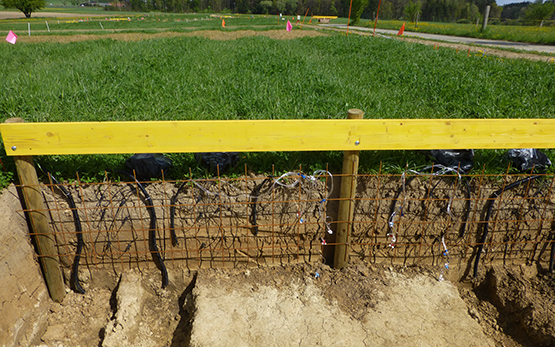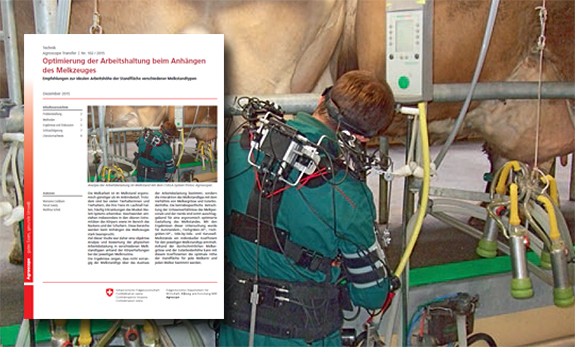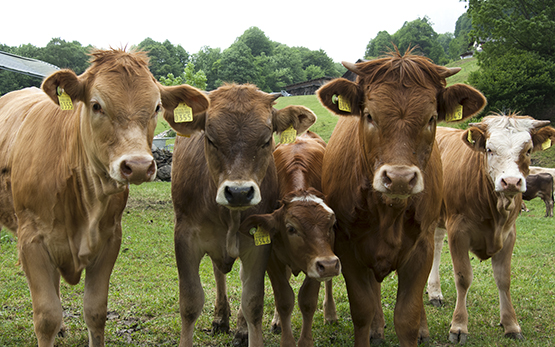Gazzarin C.
Auf Grasland Rindfleisch wirtschaftlich produzieren und dabei die Artenvielfalt fördern.
Montagna, 3, 2024, 24-25.
Schlebusch S., Hoop D., von Rohr P., Pausch H., Gazzarin C.
Enhancing culling decisions in Swiss dairy farming: Introducing a tool for improved replacement choices.
Smart Agricultural Technology, 8, 2024, 1-10.
Gazzarin C.
Bio-Weidebeef im Vergleich.
Dans: Silvestri Bio-Weiderind Produzententagung. 28. März, Brunegg. 2024, 1-33.
Gazzarin C., Bütler A.
Wie wirtschaftlich ist die Produktion von Bio-Rindfleisch?
Agrarforschung Schweiz, 15, 2024, 77-88.
Huber R., Cockburn M., Gazzarin C.
Wie wirtschaftlich ist die Pensionspferdehaltung?: Ergebnisse aus einer ETH Masterarbeit von Rafael Huber.
Dans: Strickhof Pensionspferdetag. 20. März, Wülflingen. 2024, 1-23.
Gazzarin C.
Wirtschaftliche und standortangepasste Mutterkuhhaltung: GrassBeef4Future.
Dans: Erfolg mit Mutterkuhhaltung. 7. März, Altdorf, Landwirtschaftsamt Kanton Uri. 2024, 1-40.
Gazzarin C.
Bio-Rindfleischproduktion im Vergleich: Was ist wirtschaftlicher und welches Fleisch schmeckt besser?
Dans: 25. Fleischrindersymposium. 25. Januar, Ed. Plantahof, Landquart (CH). 2024, 1-31.
Gazzarin C., Jan P.
Sustainable intensification of grass-based beef production systems in alpine regions: How to increase economic efficiency while preserving biodiversity?
Agricultural Systems, 214, 2024, 1-13.
Kozak O., Lavreniuk H., Gazzarin C.
Wenn der Krieg den Betrieb erfasst: Drei ukrainische Betriebsleiter erzählen.
BauernZeitung, 3, (113), 2024, 35.
Schlebusch S., Hoop D., Gazzarin C.
Einfluss des Produktionssystems und wirtschaftlicher Faktoren auf die optimale Nutzungsdauer.
Dans: 46. Agrarökonomie-Tagung. 21. November, Ed. Agroscope, Tänikon (CH). 2023, 1-20.
Gazzarin C., Spengler A.
Mehr als durchschnittlich: strategische Kreuzungszucht auf dem Vormarsch.
forum, 9, 2023, 6-9.
Kozak O., Gazzarin C.
La traite sous les bombes.
Revue UFA, 9, 2023, 68-71.
autres langues: allemand
Gazzarin C.
Wirtschaftlichkeit der Weidemast: Provisorische Ergebnisse im Rahmen des Projekts BioPerform.
Dans: Bio Suisse Fachgruppe Fleisch. 12. September, Olten. 2023.
Bütler A., Gazzarin C., Bravin E., Louw-Prevost M.
Catalogue des coûts 2023 : Valeurs indicatives des coûts de machines, du travail, des bâtiments et de la mécanisation intérieure. Valable jusqu’en septembre 2024.
Agroscope Transfer, 499, 2023, 1-60.
autres langues: allemand
Bütler A., Gazzarin C.
Rentabilität durch Effizienz ?: Die Kosten von moderner Landtechnik.
Dans: AgriEmotion 2023. 18. August, Ed. Agroscope, Tänikon. 2023, 1.
Meyer M., Gazzarin C., El Benni N., Jan P.
The structure of Swiss alpine summer farms: An old tradition through a new lens.
Dans: 33. Jahrestagung der Österreichischen Gesellschaft für Agrarökonomie. 27. September, Wien (AT). 2023.
Mariotte P., Grossiord C., Kay S., Manzocchi E., Aeby P., Ampuero S., Dubois S., Silacci P., Leifeld J., Jan P., Gazzarin C., Probo M.
Installer des haies fourragères pour produire du fourrage supplémentaire lors de périodes de sécheresse estivale.
Dans: Assemblée générale de l'association pour le développement de la culture fourragère. 10 mai, Sorens. 2023.
autres langues: allemand | italien | anglais
Gazzarin C., Blättler T., Bütler A., Durgiai B., Schmid D.
Wirtschaftlichkeit der Bergmilch Produktion mit Original Simmentaler Kühen.
Dans: Frühjahrstagung 2023. 19. April, Ed. Schweizerische Vereinigung für Tierwissenschaften, Zollikofen. 2023, 1.
Kozak O., Jan P., Renner S., Gazzarin C.
Forschender Blick auf den Milchmarkt.
BauernZeitung, 27. Januar, 2023, 4-5.
Gazzarin C.
Grundfutter wirtschaftlich betrachtet: Grundfutteranteil und Milchleistungsniveau in einer Vollkostenbetrachtung.
Dans: Strickhof Milch-Tag. 27. Januar, Ed. Strickhof, Lindau. 2023, 1-22.








